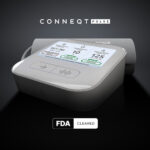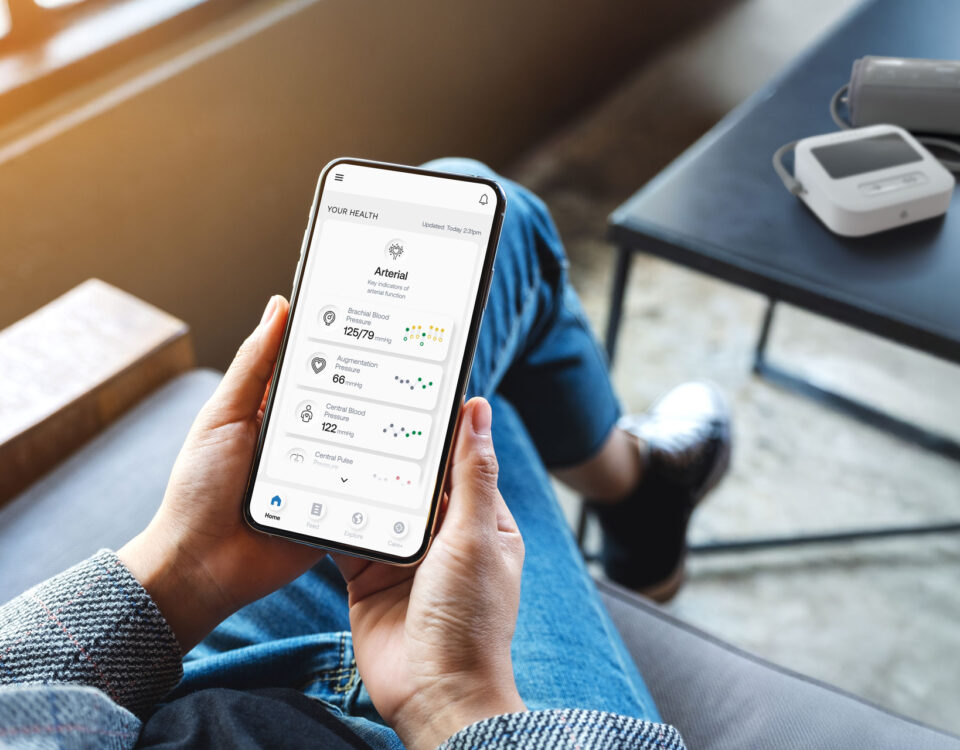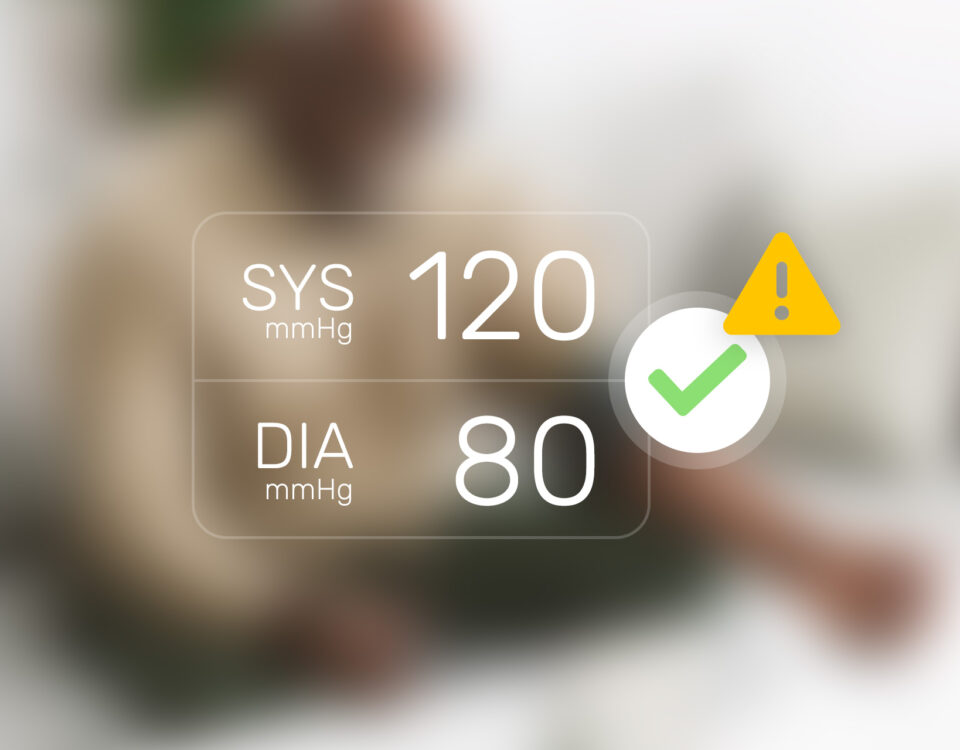In a Heartbeat
- What is SEVR? Subendocardial viability ratio (SEVR) is a measure of how well the inner heart muscle is supplied with oxygen during each heartbeat. It reflects the balance between oxygen supply and demand in the subendocardium—the heart’s most vulnerable layer.
- Why Does It Matter? A low SEVR may indicate that your heart isn’t getting enough oxygen to meet its needs. This imbalance can be an early marker of ischemia or arterial stiffness and is especially relevant in conditions like hypertension, diabetes, or coronary artery disease.
- How is It Measured? SEVR is measured non-invasively by the Pulse using pulse wave analysis (PWA). It evaluates your central blood pressure waveform to determine how well blood flow and pressure patterns support the heart’s oxygen needs during rest and stress.
- Actionable Insights: Monitoring SEVR can help detect early signs of oxygen imbalance. If your SEVR is below 100%, it may suggest that the inner heart muscle isn’t receiving sufficient oxygen—particularly during periods of increased demand. Lifestyle changes like improved diet, stress management, and regular exercise can help support healthier SEVR values.
- What This Means for You: Measuring SEVR with the Pulse offers a valuable opportunity to assess whether your heart’s oxygen supply is keeping up with demand—especially under stress. By tracking this metric over time, you can catch early signs of imbalance and take steps to improve cardiovascular resilience through targeted lifestyle changes or medical guidance.
What is Subendocardial Viability Ratio (SEVR)?
Subendocardial viability ratio (SEVR) is a measure that assesses the balance between the oxygen supply to the innermost layer of the heart muscle (the subendocardium) and the heart’s oxygen demand during each heartbeat. Specifically, SEVR reflects how much oxygen-rich blood flows to the heart during its relaxation phase (diastole) compared to how much oxygen the heart muscle needs. This measurement is essential for understanding how well the heart meets oxygen demands, especially in individuals with cardiovascular disease, where the oxygen supply is lower. SEVR is also critical in assessing the heart’s function during times when it faces greater demands, such as during physical activity, providing critical insight into how the heart performs under stress.
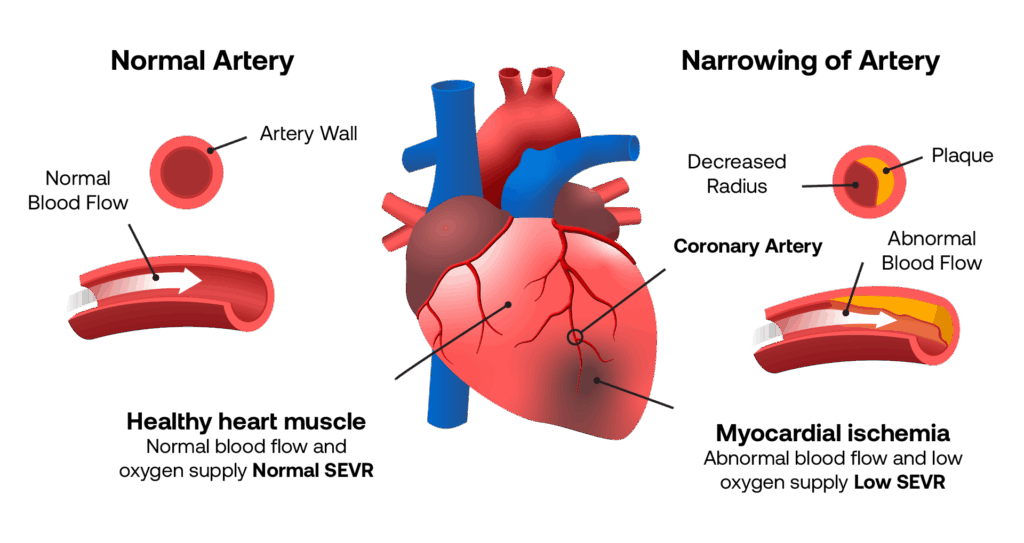
Why is Subendocardial Viability Ratio Important?
Monitoring SEVR is essential for understanding how well your heart is getting the oxygen it needs, notably in individuals with cardiovascular disease. A low SEVR indicates that the heart may not be receiving enough oxygen to meet its demands such as in conditions including coronary artery disease, hypertension, diabetes, and valvular heart disease. When the heart doesn’t get sufficient oxygen-rich blood, it can impact your ability to exercise and increase the risk of serious complications. This lack of oxygen can also lead to ischemia, where parts of the heart muscle are damaged due to insufficient blood flow. Regularly tracking SEVR helps healthcare providers detect early signs of these changes and take steps to prevent more severe cardiovascular issues.
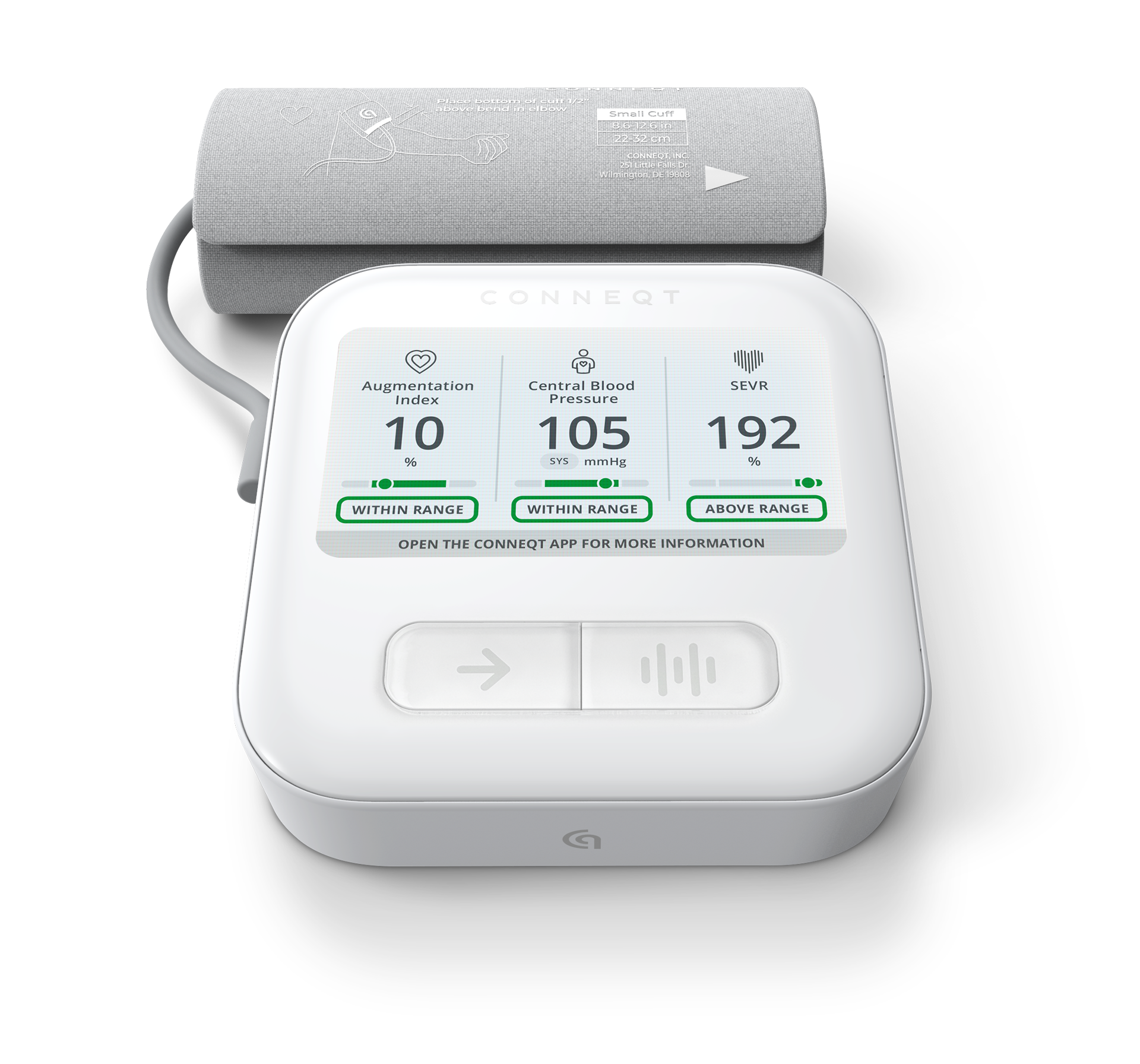
Measure what matters
Save 20% on checkout with code VITALITY
How is Subendocardial Viability Ratio Measured?
The CONNEQT Pulse utilizes advanced, non-invasive technology, including SphygmoCor® integration, to measure SEVR and other arterial biomarkers that traditional devices do not provide. This process involves pulse wave analysis (PWA), which evaluates the waveforms generated by each heartbeat. SEVR is calculated by taking the ratio of the blood pressure in the aorta at the beginning of diastole (the resting phase of the heartbeat) to the blood pressure in the coronary arteries during the same phase. By analyzing the shape and characteristics of the pulse wave, SEVR provides insights into the balance between the oxygen supply and demand in the inner heart muscle, helping to evaluate how well the heart is being supplied with oxygen-rich blood when its demand increases.
What Do My Results Mean?
Your SEVR results are classified into personalized ranges that are tailored to your individual health profile. These ranges are based on data from a large clinical study that examined vascular health in over 4,000 people across a wide range of ages and demographics, creating a detailed picture of how arteries naturally age over time.
By comparing your results to this healthy population without cardiovascular disease, the Pulse helps show whether your cardiovascular measurements—like SEVR—fall within the expected range for someone your age and sex.
The ranges below explain what your SEVR score may indicate about your cardiovascular health.
Reference Ranges:
- Below Range (<100%):
- When SEVR drops below 100%, it means that the heart muscle’s oxygen demand is higher than the supply, which may indicate that the inner lining of the heart—the subendocardium—is not receiving sufficient oxygen or blood flow. This can be an indirect marker for ischemia and stiffness of the coronary arteries.
- All below range SEVR measurements must be interpreted in the context of your central blood pressure and arterial stiffness and should be evaluated by your physician for tests and treatments that can be done to lower your cardiovascular risk.
- Within Range (100-180%):
- A within range SEVR is normal and typically between 100–180%. This is generally seen as a positive marker of cardiovascular health. This means that the inner lining of the heart—the subendocardium—has an adequate oxygen supply to meet its demand. This can be a sign that the heart muscle’s oxygen balance is functioning well.
- Positive lifestyle habits—such as a heart-healthy diet, regular exercise, and maintaining a healthy weight—can help keep your SEVR within the normal range.
- Above Range (>180%):
- Values above 180% indicate that the myocardial oxygen supply exceeds the demand. This is generally seen as a positive marker of cardiovascular health.
Regularly tracking your SEVR and understanding these ranges is important for maintaining or achieving optimal cardiovascular health. This tailored approach supports better decision-making regarding treatments, lifestyle adjustments, and ongoing health management.
How Do I Improve and Maintain My Subendocardial Viability Ratio?
Subendocardial viability ratio (SEVR) is a key marker that helps us understand whether your heart is getting enough oxygen to meet its needs—especially the inner layer of the heart muscle, which is most vulnerable when oxygen is limited. When SEVR is below range, it may mean your heart is working harder than the oxygen supply can support. The good news: SEVR can be improved through habits that make it easier for oxygen-rich blood to reach the heart. Here’s how to support SEVR through targeted lifestyle changes:
- Follow a Cardiovascular-Friendly Diet: Adopt a Mediterranean-style diet high in vegetables, fruits, whole grains, legumes, nuts, and healthy fats. This eating pattern improves endothelial function and blood flow while reducing inflammation. Incorporate nitrate-rich foods like beets, arugula, spinach, and pomegranate, which enhance nitric oxide production and improve coronary oxygen delivery. Include omega-3 fats from salmon, flaxseeds, or walnuts to support vascular health.
- Supplement Strategically: Use magnesium (200–400 mg/day) to support vascular tone and relaxation, and CoQ10 (100–200 mg/day) to enhance mitochondrial efficiency and improve the heart’s energy use. L-arginine and L-citrulline help boost nitric oxide availability, supporting blood flow to the heart. Aged garlic extract and nattokinase may reduce arterial resistance and stiffness, while Vitamin D and K2 support arterial elasticity and help prevent calcification. Discuss supplement use with your healthcare provider to ensure safety and effectiveness.
- Engage in Targeted Exercise to Improve SEVR: Reducing arterial stiffness is one of the most effective ways to improve SEVR. Research-backed exercise types include:
- Zone 2 cardio (4–5x/week): Brisk walking (30–60 minutes), cycling at 60–70% of your maximum heart rate (30–45 minutes), or swimming and rowing (30 minutes, 3–4 times per week) support nitric oxide production and improve blood vessel elasticity.
- High-intensity interval training (1–2x/week): Alternating short bursts of effort with rest—such as 4-minute sprints at 85–95% of your max heart rate with 3-minute breaks, or jump rope intervals (40 seconds fast, 20 seconds rest for 15–20 minutes)—can enhance vascular responsiveness and reduce stiffness.
- Isometric handgrip training (4x/week): Using a handgrip device or stress ball, hold at 30% of your maximum strength for 2 minutes, rest for 1 minute, and repeat 4 times. This simple practice has been shown to lower systolic blood pressure and improve arterial compliance within weeks.
- Moderate resistance training (2–4x/week): Focus on compound movements such as squats, lunges, rows, and shoulder presses using 50–70% of your one-rep max. Strength training at this level can support vascular flexibility while helping preserve lean muscle mass.
- Stretching and yoga (3–5x/week): Practices like Hatha or Vinyasa yoga, along with dynamic and passive stretching, help reduce stress and support healthy autonomic balance—both important for maintaining optimal oxygen supply to the heart.
- Cold exposure (2–3x/week): Alternating hot and cold in the shower (10–30 seconds cold, 10 seconds warm, repeated 5 times) or taking cold baths (50–59°F for 3–5 minutes) may promote vascular adaptation and improve endothelial function.
- Maintain a Healthy Weight: Excess weight increases the heart’s workload and can impair oxygen delivery. Focus on gradual, sustainable weight loss through balanced nutrition and regular physical activity to improve SEVR.
- Prioritize Stress Reduction: Chronic stress can lower SEVR by constricting blood vessels and raising blood pressure. Use techniques like deep breathing, mindfulness, or yoga to reduce sympathetic activity and support cardiovascular function. Practices such as breathwork (e.g., box breathing or paced breathing) and heart rate variability (HRV) training can help shift your nervous system toward a parasympathetic state, improving vascular tone and oxygen balance.
- Monitor and Improve Blood Pressure: Track central and brachial blood pressure using the Pulse to identify patterns that may impact SEVR. Improving blood pressure through lifestyle and medication, when needed, supports better oxygen delivery to the heart.
- Address Metabolic Health, Hydration, and Sleep: Balance blood sugar with nutrient-dense meals and reduce added sugars to support vascular health. Hydration is equally important—dehydration can increase blood viscosity and make it harder for oxygen-rich blood to reach the heart. Aim to drink water consistently throughout the day, especially before and after physical activity. Sleep 7–9 hours nightly to promote recovery and support autonomic balance.
- Quit Smoking and Limit Alcohol: Tobacco use stiffens arteries and reduces oxygen supply to the heart. Quitting smoking is one of the most effective ways to improve SEVR. Limit alcohol to no more than 1 drink per day for women and 2 for men to avoid vascular strain.
- Personalized Monitoring and Care: Use the Pulse to track SEVR trends and monitor how your habits affect oxygen delivery over time. If SEVR remains below range, speak with your healthcare provider. Additional testing—such as calcium scoring or lipid profiling—can help tailor a plan to your cardiovascular profile.
By implementing these strategies and tracking your progress with the Pulse, you can support better oxygen delivery to the heart and improve your long-term cardiovascular health.
Empowering Your Heart Health Journey
By regularly monitoring and understanding your SEVR and other arterial biomarkers with the Pulse, the world’s most advanced personal arterial health monitor, you can take proactive steps toward maintaining a healthy cardiovascular system from the comfort of your home. This cutting-edge technology empowers you to make informed decisions about your health, potentially reducing your risk of serious cardiovascular conditions and enhancing your overall well-being.

